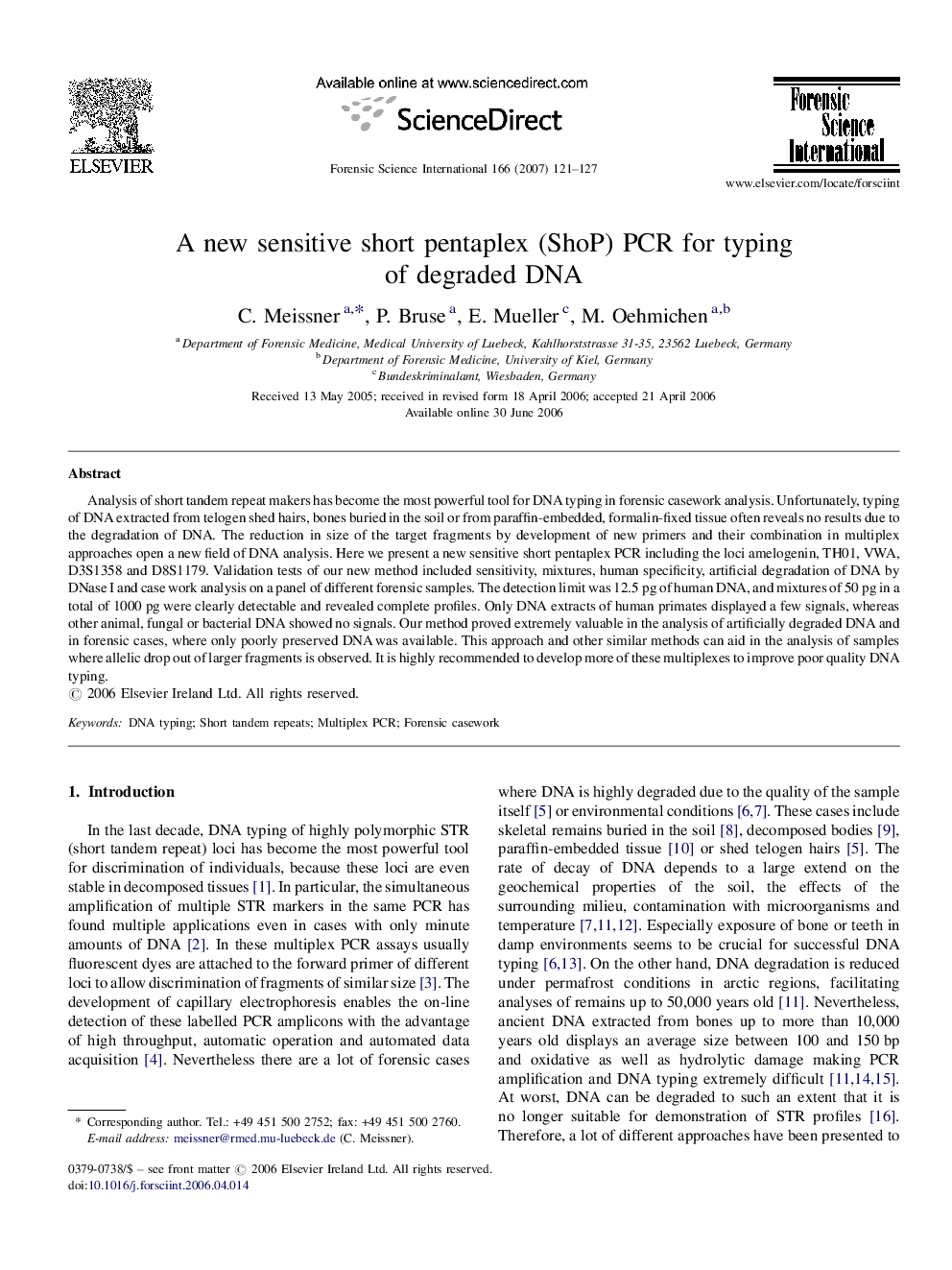| Article ID | Journal | Published Year | Pages | File Type |
|---|---|---|---|---|
| 6553118 | Forensic Science International | 2007 | 7 Pages |
Abstract
Analysis of short tandem repeat makers has become the most powerful tool for DNA typing in forensic casework analysis. Unfortunately, typing of DNA extracted from telogen shed hairs, bones buried in the soil or from paraffin-embedded, formalin-fixed tissue often reveals no results due to the degradation of DNA. The reduction in size of the target fragments by development of new primers and their combination in multiplex approaches open a new field of DNA analysis. Here we present a new sensitive short pentaplex PCR including the loci amelogenin, TH01, VWA, D3S1358 and D8S1179. Validation tests of our new method included sensitivity, mixtures, human specificity, artificial degradation of DNA by DNase I and case work analysis on a panel of different forensic samples. The detection limit was 12.5Â pg of human DNA, and mixtures of 50Â pg in a total of 1000Â pg were clearly detectable and revealed complete profiles. Only DNA extracts of human primates displayed a few signals, whereas other animal, fungal or bacterial DNA showed no signals. Our method proved extremely valuable in the analysis of artificially degraded DNA and in forensic cases, where only poorly preserved DNA was available. This approach and other similar methods can aid in the analysis of samples where allelic drop out of larger fragments is observed. It is highly recommended to develop more of these multiplexes to improve poor quality DNA typing.
Related Topics
Physical Sciences and Engineering
Chemistry
Analytical Chemistry
Authors
C. Meissner, P. Bruse, E. Mueller, M. Oehmichen,
